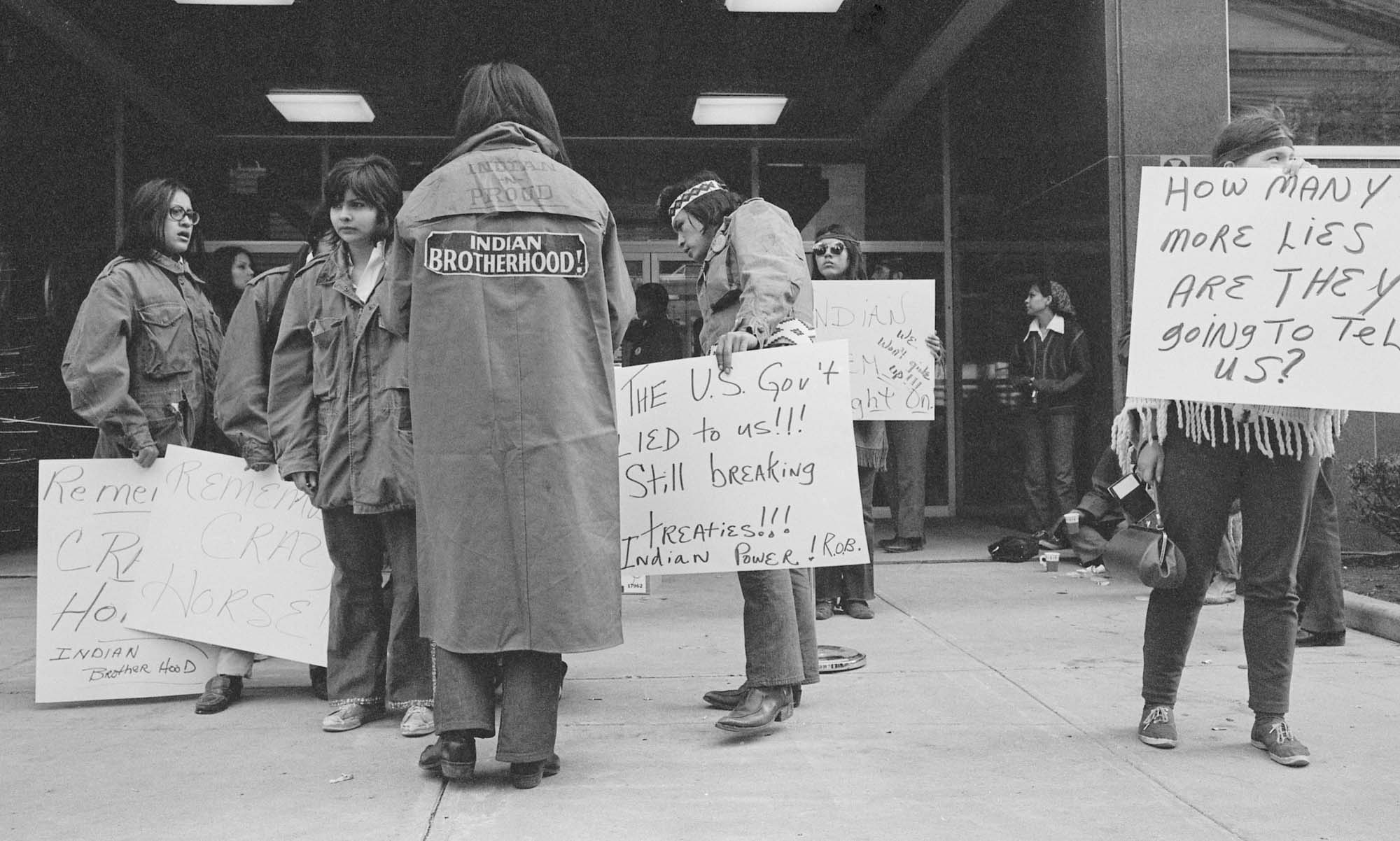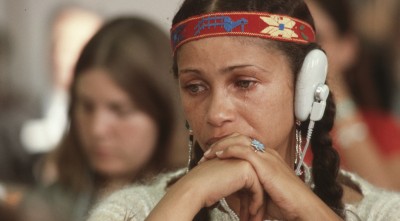The American Indian Movement (AIM) stopped making headlines long ago, but it’s still making history.

Last year the organization began planning an interpretive center to house the photos, artifacts and stories that document AIM’s importance in restoring Indian civil rights, identity and pride. This spring a sample of that material is showcased in two exhibitions: a powerful, emotionally stirring show of about 100 photos plus memorabilia (posters, buttons, articles) at All My Relations Gallery in south Minneapolis and a smaller display of about 25 photos downtown at the Mill City Museum. Accompanying them is a handsome new book, “We Are Still Here: A Photographic History of the American Indian Movement,” from the Minnesota Historical Society Press.

Founded in Minneapolis in 1968, AIM was ambitious in its goals and fortunate in its leaders. Responding to endemic poverty, racism, police harassment and centuries of broken treaties, the fledgling organization set out to reclaim native pride, much as the civil rights movement was doing for black Americans. Its goals encompassed everything from improved housing, education and employment for urban Indians to encouraging native people to assume responsibility and engage in civic affairs.
Now, 45 years later, its legacy is especially visible on revitalized Franklin Avenue in south Minneapolis, where banners announcing an American Indian Cultural Corridor flutter on new light poles, and Indian businesses and civic organizations (Northland Native American Products, Minnesota Chippewa Tribe, Native American Community Development Institute) anchor an increasingly upscale neighborhood.
Tough times documented
There was nothing upscale in the lives of urban Indians in the 1960s, as documented in “I’m Not Your Indian Anymore” at All My Relations. The earliest black-and-white images show the poverty and danger — junked cars, rickety stairs, holes in floors — in which Indians often struggled to raise their families. AIM’s early marches, rallies and confrontations were recorded at Minneapolis City Hall, the village of Wounded Knee, S.D., and at the Bureau of Indian Affairs in Washington, D.C.
The emotional power of the shows comes in the unvarnished authenticity and you-are-there candor of the grainy images, including a wedding, a funeral, and a clutch of camouflage-clad U.S. military men arriving at Wounded Knee. In a particularly striking picture by Kevin McKiernan, an elderly woman named Cecilia Jumping Bull proudly clutches a folded U.S. flag and photos of two young men, presumably her sons, in military uniforms. A bullet hole disfigures one of the portraits, prompting her remark: “The government shoots my house; they have no respect for me.”

Other images document police beatings and harassment, protests at a Wisconsin power dam that had flooded tribal lands, and a long 1972 march to Washington known as the Trail of Broken Treaties Caravan. But AIM had broader goals, too, as evidenced in Roger Woo’s 1975 photo of kids being tutored at the Red School House, a St. Paul school for Indian youths, and of a boy being cared for at an Indian Health Board Clinic.
The earliest black-and-white pictures were taken by a variety of photographers, most notably Woo and McKiernan. Most of the color images, including a preponderance of those in the book, are by Dick Bancroft, who became the movement’s unofficial photographer.
Complex conflicts
Not surprisingly, the back story of many of the photos is complex. Official tribal leaders of the time often sided with federal bureaucrats against AIM, trying to discredit it as a ragtag group of “urban Indian” agitators, even though it enjoyed support of many traditional elders.
The magnitude of AIM’s reach became apparent in 1977 when an international delegation of indigenous people took their concerns to the United Nations in Geneva, Switzerland. Among the delegates was Winona LaDuke, then an 18-year-old Harvard student who had researched uranium and coal mining on Indian lands. “I was in awe of everybody,” she recalls in the book. “I’d never been exposed to all this cool political leadership.”

The 13-point resolution the group presented became the basis of a U.N. Declaration on the Rights of Indigenous People that was approved, finally, 30 years later.
Like all history, AIM’s story will doubtless be debated and interpreted for years to come. These compelling exhibitions and the engrossing, meticulously researched book are an essential foundation for that discussion.
I’m Not Your Indian Anymore
What: An impressive photographic history of the American Indian Movement (AIM), featuring images by Dick Bancroft, Roger Woo and Keri Pickett.
When: 11 a.m.-6 p.m. Mon.-Fri., 11 a.m.-3 p.m. Sat. Ends June 29.
Where: All My Relations Gallery, 1414 E. Franklin Av., Mpls. www.allmyrelationsarts.com or 612-235-4970.
Admission: Free.
Mary Abbe • 612-673-4431










